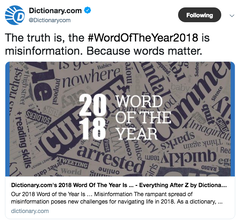Even if the timing feels a little arbitrary, I like reflecting back on work completed (or abandoned), projects finished (or started), and goals met (or missed). And of course, my favorite sentient frenemy—the algorithm—is always (always) there to helpfully remind me of books I’ve read, music I’ve listened to, miles I’ve logged, and social media moments I’ve posted.
Most of us count on the relative success (and/or failure) of this reportage to jumpstart new-year plans for productivity. And if my inbox is any indication, 2019 is going to be The Year for The Big Project. It’s the year to Become an Artist, to Find a New Job, to Run a Marathon, and possibly, to Write a Book.
I capitalize to make fun, but I’m a productivity adherent (if not [yet] a practitioner): I am most definitely creating a Google Sheets tracker for 2019.
Happily, though, the zeitgeist also suggests that 2019 might be a year for doing things differently.
For once this doesn’t appear to necessarily refer to a plan or program or workshop or webinar or other delivery mechanism for efficiently maximized production. Instead, it seems to refer to actually doing less to reach normative notions of success.
I’m all for it, especially after reading David W. Orr’s words from Ecological Literacy, recently excerpted by Tina Roth Eisenberg on Swiss Miss. The world, Orr writes, “desperately need[s] more peacemakers, healers, restorers, storytellers, and lovers of every kind…It needs people of moral courage willing to join the fight to make the world more habitable and humane.”
In 2019, I for sure want to take on more projects, make more money, and accrue some tangible success, but more than that, I want to be less quantifiably busy and more qualitatively engaged in peacemaking and restoration, in practicing the moral courage required to make the world more habitable and more humane. I don’t yet know quite what this means, but I do know that you should join me. Do less in 2019! But also do more.


